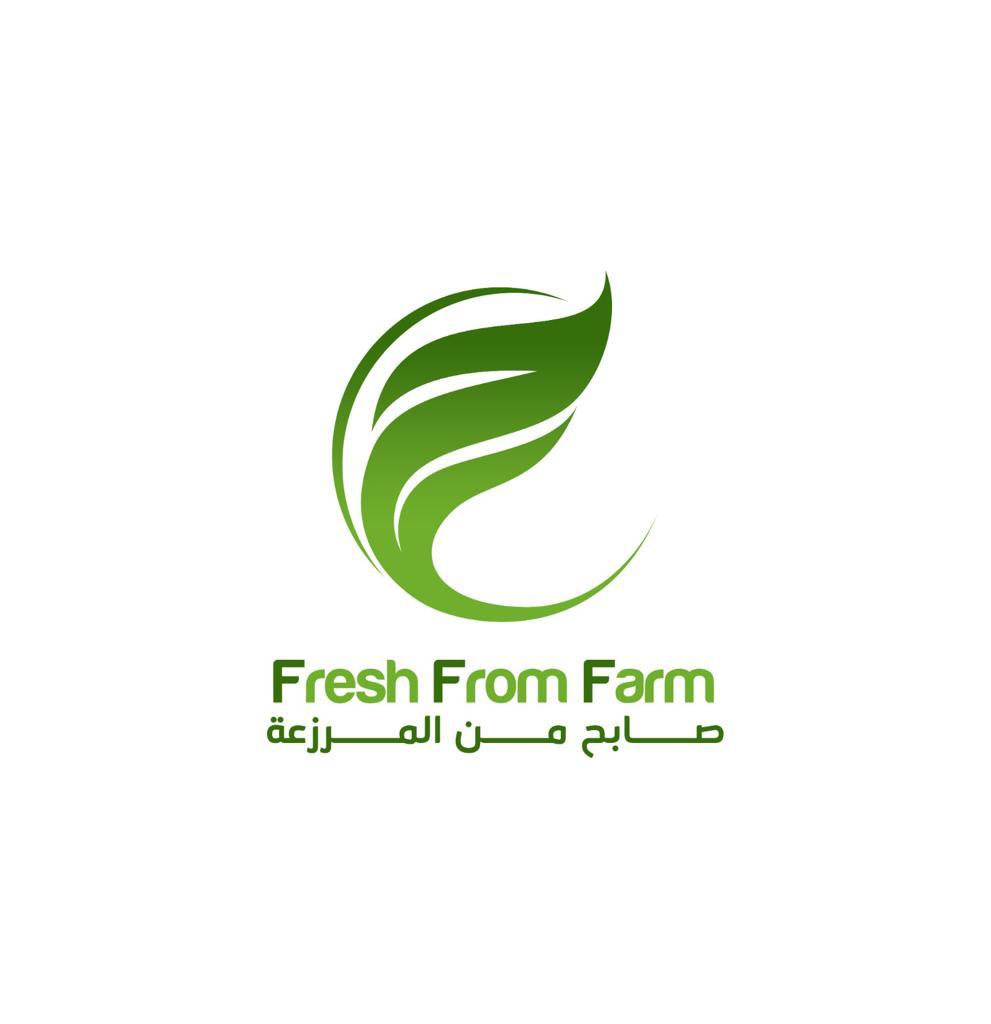- Optional specifications: Rib length 25mm or 50mm
We offer a full range of chilled and frozen meat, packed and labelled to requirement, all year round. Our expert processing techniques and adherence to minimum chilled holding periods ensure maximum tenderness. Strict standards, quality controls and safety and hygiene processes ensure we deliver some of the world’s best lamb & beef, every time.

We offer a full range of chilled and frozen cuts packaged to requirement on a year round basis. Strict hygiene processes and temperature control ensure that our chilled beef has up to 12-week shelf life, provided optimum storage conditions are maintained.
Our Products
We are a company of proud, passionate farmers and food people, dedicated to doing the right thing, collaborating and innovating, and always creating inspirational food for our customers.

More About our Frozen/Chilled Meat
we understand that the ability to make delicious is in the way we approach our product, from start to finish.
Our farmers have generations of expertise and raise breeds that are recognised for their eating quality. A flavoursome, healthy and versatile choice, all our mutton products fulfil our high standards of safety, hygiene and quality and are specially selected and packaged to suit a range of applications in the retail, foodservice and processing sectors. We offer a full range of frozen Meat products year round.
- LAMB
- BEEF
- MUTTON
LOIN
1 Rib Loin – 75mm Chump On

- The 1 rib loin, or shortloin, is prepared by splitting an 8 rib loin chump on between the 12th and 13th ribs creating the 1 rib loin and a lamb rack. Rib length – 75mm
1 Rib Loin – 75mm Chump Off

- The 1 rib loin, or shortloin, is prepared by splitting an 8 rib loin chump on between the 12th and 13th ribs creating the 1 rib loin and a lamb rack. Rib length – 75mm
- Optional Specifications: Rib length -25mm, 70mm or75mm. Rib no. 0 Rib
1 Rib Saddle – 25mm Chump Off
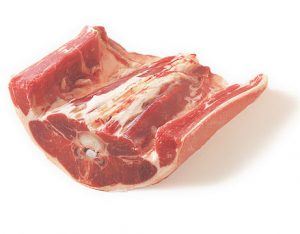
- This cut is prepared from an 8 rib saddle. The 1 rib saddle is separated from the rack saddle by a straight cut between the 12th and 13th rib.
- Optional Specifications: 0 Rib
8 Rib Loin – 75mm Chump On

- This cut is prepared from a bone-in carcase. The forequarter is removed by a straight cut between the 5th and 6th ribs and the legs are removed by a straight cut 30-35mm below the round of the aitch bone. The flap is removed by a cut 75mm from the eye of the meat. The resulting saddle is then split by a straight cut through the backbone.
8 Rib Loin – 75mm Chump Off

- This cut is prepared from a bone-in carcase. The forequarter is removed by a straight cut between the 5th and 6th ribs and the legs are removed by a straight cut 30-35mm below the round of the aitch bone. The flap is removed by a cut 75mm from the eye of the meat. The resulting saddle is then split by a straight cut through the backbone.
8 Rib Saddle – 25mm Chump Off

- This cut is prepared from a bone-in carcase. The forequarter is removed by a straight cut between the 5th and 6th ribs and the legs are removed by a straight cut at the cushion between the 1st and 2nd lumbar vertebrae from the leg end. The flap is removed by a cut 25mm parallel to the backbone.
Boneless Loins – Silverskin Removed

- This cut is the eye of meat from the loin or shortloin. The gristle, excessive fat and silverskin are removed to leave only the loin muscle intact.
- Optional specifications: Silverskin left intact.
Frenched Rack – 75/25 – Seamed

- This cut is prepared from a standard rack. The chine and feather bones are removed leaving the ribs so that they can be separated by knife. The fell is removed by following the natural seam above the eye of the meat. The ribs are cleaned of all meat and fat (frenched) to a distance 25mm from the eye of the meat.
Frenched Rack – 50/0 Denuded

- This cut is prepared from a rack. The chine and feather bones are removed leaving the ribs so that they can be separated by knife. The eye of the meat and the ribs are then cleaned of all meat and fat coverage.
Loin Cutlets – 75mm Chump Off

- This cut is prepared from a 75mm chump off, 8 rib or 1 rib loin. The loin is sliced into cutlets of 17mm thickness through the backbone. Rib length – 75mm
Rack – 75mm

- The rack is prepared by splitting an 8 rib 75mm loin between the 12th and 13th ribs creating the rack and a 1 rib shortloin.
Saddle Cutlet – 25mm

- This cut is prepared from an 8 rib or 1 rib saddle. The saddle is then sliced into cutlets of 20mm thickness through the backbone.
Tenderloin – Butt On

- The tenderloin is removed from the inside of the loin cavity. The side muscle is removed and the tenderloin is trimmed of any excess fat.
NECK
Neck Fillet
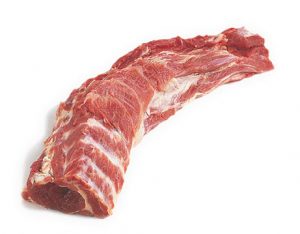
- This cut is the eye of meat that runs from the neck through the forequarter. The paddywack and excess fat are removed.
Necks / Neck Slices

- The whole neck is removed from the base of the shoulder by a saw cut. The atlas tip is removed.
- Optional Specifications: 20mm neck slices
LEG
Boneless Chumps – Cap On

- This cut is removed from a part-boned leg by a straight cut 5-10 mm below the round of the femur bone leaving the fat cap, or fell intact.
Boneless Chumps – Denuded
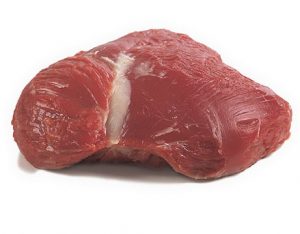
- This cut is removed from a part-boned leg by a straight cut 5-10mm below the round of the femur bone leaving the fat cap, or fell intact. The cap is subsequently removed by hand, and any residual fat is fully trimmed leaving only the heart of the rump.
Boneless Leg – Shank Off Chump Off

- This cut is prepared from the bone in leg. The femur bone is removed by the ‘tunnel bone’ technique so as to leave the boneless leg in its natural shape.
- Chump left intact
- Leg can be netted
Leg – Shank On Chump On

- This cut is also know as the long leg, the leg is removed from the carcase by a straight cut at right angles to the backbone between the 1st and 2nd lumbar vertebrae from the leg end. The knuckle tip is subsequently removed.
Leg CKT

- This is cut is also known as a short cut leg. The leg is removed from the carcase by a straight cut at right angles to the backbone approximately 30-35 mm below the round of the aitch bone leaving the chump intact on the loin. The knuckle tip is subsequently removed.
Leg Part Boned – Shank Off Chump Off

- This cut is also known as an FBO or femur bone only leg, chump off. It is prepared from a full leg by removal of the aitch bone and sacral vertebrae. The leg is trimmed of glands and excess fat. The boneless chump and shank are subsequently removed.
Leg Part Boned – Shank Off Chump On

- This cut is also known as an FBO or femur bone only leg, chump on. It is prepared from a full leg by removal of the aitch bone and sacral vertebrae. The leg is trimmed of glands and excess fat. The shank is subsequently removed
Leg Part Boned – Shank On Chump Off

- This cut is also known as an ABO or aitch bone removed leg chump off. It is prepared from a full leg by removal of the aitch bone and sacral vertebrae. The leg is trimmed of glands and excess fat. The chump and knuckle tip are subsequently removed.
Leg Part Boned – Shank On Chump On

- This cut is also known as an ABO or aitch bone removed leg chump on. It is prepared from a full leg by removal of the aitch bone and sacral vertebrae. The leg is trimmed of glands and excess fat. The knuckle tip is subsequently removed.
Leg Steaks

- The leg steaks are derived from a part boned chump off lamb leg. Slices are cut to a thickness of 20mm from the chump end through to the hindshank. Leg steaks are the cutlets which contain the circular femur bone.
SHOULDER
Boneless Shoulder – 80CL

- This cut is prepared from a bone-in shoulder. The shoulder is removed of all bones. The resulting meat is then trimmed of excess fat to an 80% chemical lean specification.
BRN Shoulder

- This cut is prepared from a bone-in shoulder. The shoulder is fleeced from the rib cage and all bones are removed. The resulting meat is then trimmed of excess fat. The shoulder is rolled with the fell to the outside and packed in netting.
Forequarter – Breast Off

- The full double forequarter is removed from the carcase by a straight cut between the ribs and then split by a straight cut through the backbone. The atlas tip, breast, and knuckle tip are removed leaving the neck and shank intact.
- the breast may be left intact
- the neck may be removed.
Oyster Cut Shoulder – Shank On

- This cut is prepared from a bone-in forequarter. The oyster cut shoulder comprises of the shank bone, arm bone and blade bone, separated from the rib cage along the natural seam. The underlying muscle on the blade bone remains with the oyster shoulder. The knuckle tip is removed.
- Shank removed
- Straight leg
Shoulder Cutlets

- The shoulder cutlets are derived from a square cut shoulder, cut to a thickness of 20mm.
Square Cut Shoulde

- The shoulder is removed from the carcase at a right angle and then split by a straight cut through the backbone. The shank and breast are removed in a straight line parallel to the backbone. The protruding neck is removed in line with the back.
SHORTLOIN
Striploin

- This cut is the remaining portion of the shortloin after the tenderloin and all bones have been removed. Various weight ranges available
Striploin – Steak Ready
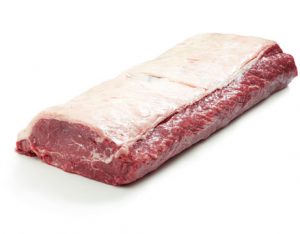
- This cut is the standard striploin with chain muscle and tail removed. The backstrap is removed 30-50mm from the vertebrae edge. Various weight ranges available
Tenderloin – Side Muscle On

- The full tenderloin is removed in one piece from the full rump and loin and completely trimmed of fat.
Tenderloin – Side Muscle Off

- The full tenderloin is trimmed by the removal of the side muscle.
Butt Tenderloin
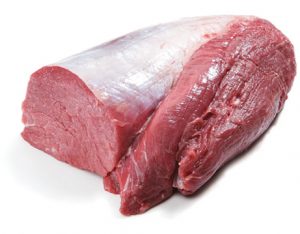
- This cut is the thick end of the full tenderloin, which is not attached to the shortloin.
Shortloin

- This cut is separated from the rump and loin at the pin bone. The shortloin is one rib. The thin flank is removed in a straight line at a distance measured from the outer edge of the eye of the meat, at the rib end and parallel to the chine bone, the tenderloin is retained except for the butt end.
SIRLOIN
Top Sirloin (Rump or Sirloin Butt)

- The top sirloin (sirloin butt) is prepared from the bone-in rump. It is removed at the pin bone and includes 22mm of the flank or tail of the rump, with the butt end tenderloin removed.
Tri Tip

- This cut is also known as the rump tail or bottom sirloin. The heavy fat on the inside surface is removed after separation.
D-rump

- This cut is prepared from a top sirloin by removal of the tail (tri-tip) along the natural seam.
Rostbiff – Rump Heart

- The rostbiff is the section of the rump left after removal of the rump cap, any external fat cover along the natural seam, and the underlying corcho muscle.
Rump Cap
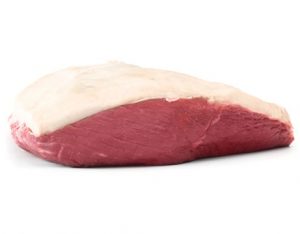
- This cut is prepared from the rump by removal of the rump cap along the natural seam.
ROUND
Outside

- This cut is one of three to come from a bone-in round, this is the outside, or lateral part of the round. A cut following the line of the femur bone separates this cut from the knuckle and the inside. The popliteal gland is removed.
Inside – Cap On

- This cut is one of three to come from a bone-in round, this is the inside, or medial part of the round. A cut following the line of the femur bone separates this cut from the knuckle and the outside round.
Eye Round

- This cut is complete long eye muscle after removal of the flat from the outside.
Eye Round – 100VL

- This cut is prepared from the eye round by removal of the outside tissue to obtain a 100VL red meat cut.
Flat

- This cut is the outside with the complete eye round removed along its natural seam.
Flat – 100VL

- This cut is prepared from the flat by removal of the fat, membrane and gristle to obtain a 100VL red meat cut.
Inside – Cap Off

- This cut is prepared from the inside by removal of the cap, following the natural seam, leaving the membrane intact.
Inside – Cap Off 100VL

- This cut is prepared from the inside by removal of the cap and membrane (outside tissue) to obtain a 100VL red meat cut.
Knuckle

- The knuckle is the thick flank with the lip, cap (web) and associated fat removed.
CHUNK
Top (Oyster) Blade

- The flat muscle group of the blade (clod) separated from the bolar by a straight cut along the line of the blade bone ridge.
Blade (Clod)

- The blade (clod) comprises all the large muscles from the outside of the blade bone extending from the foreshank joint to the tip of the blade bone cartilage.
Boneless Chuck – Square Cut 4 Rib

- The boneless chuck is derived from that portion of the bone-in forequarter from the neck to the 4th rib and is trimmed to a specified chemical lean (CL) content. The shoulder clod, brisket and shank are removed.
Chuck Roll – 4 Rib
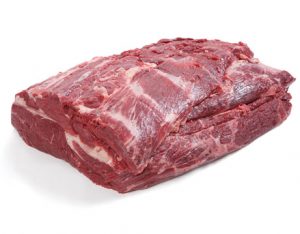
- This cut consists of the eye of meat from the neck to the 4th rib. The neck end meat is removed approx 70-100mm. The rib muscles and associated tissue are removed 75mm from the eye of the meat at the loin end, parallel to the vertebrae. The m.trapezius is removed.
Chuck Tender

- The chuck tender, or blade roll, is the round muscle next to the blade (clod), but separated from it by the blade bone ridge.
FLANK
Flanksteak

- The oval flat muscle at the end of the flank, free of excess fat and connective tissue.
Flap Meat

- The flap meat is prepared from the internal flank plate.
Boneless Leg Tunnel Boned

- This cut is prepared from a the full leg, the femur bone is removed by the 'tunnel bone' technique so as to leave the boneless leg in its natural shape. Glands, fat deposits, and surface fat is removed to achieve the required visual lean.
Boneless Mutton

- This contains selected boneless meat pieces that attain the required chemical lean.
- Optional specification: 65, 70, 80 or 85 chemical lean.
Boneless Loins

- The boneless loin is the eye of meat extending from the 3rd or 4th rib to the aitch bone. The gristle edge fat and silverskin are removed to leave only the loin muscle intact.
Tenderloins - Butt On

- The tenderloin is removed from the inside of the loin cavity. The side muscle is removed and the tenderloin is trimmed of any excess fat.
Hindshanks - Bone In

- The hindshank is removed from a bone in leg by a cut through the stifle joint. The knuckle tip is removed.

